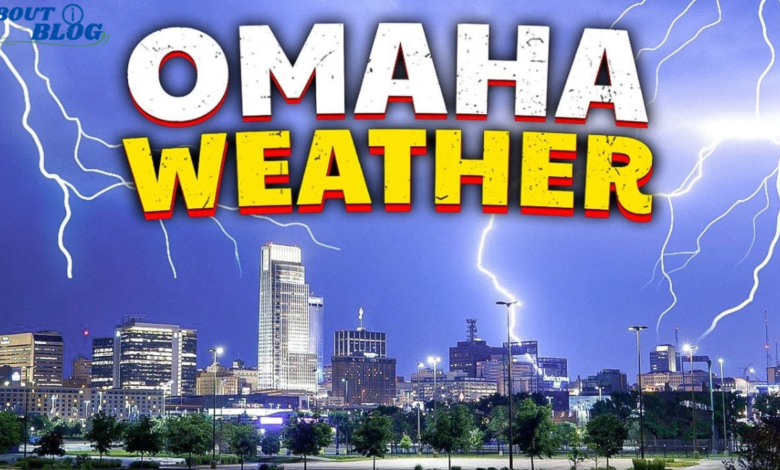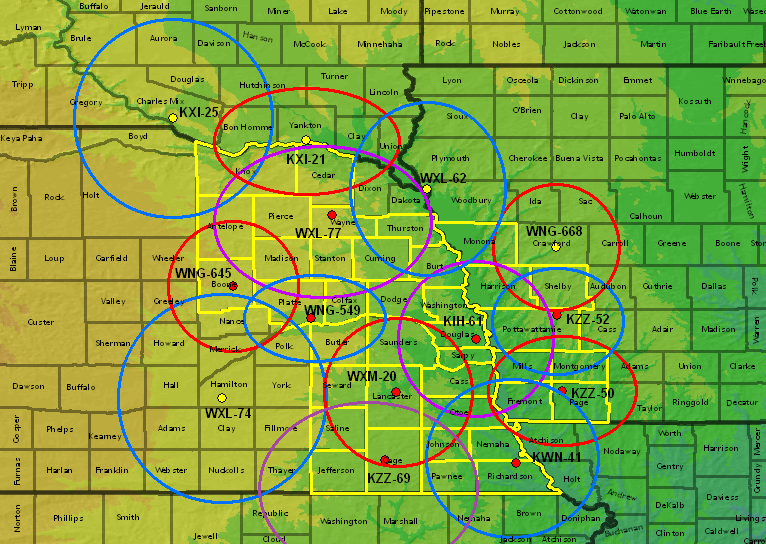Omaha Weather: Your Complete Guide to Understanding the Climate in Omaha, Nebraska

When it comes to understanding Omaha weather, there’s a lot more to it than just checking the temperature. The climate in Omaha, Nebraska, is influenced by a variety of factors, including its location, seasonal changes, and unpredictable weather patterns. Whether you’re a resident or planning to visit, understanding the intricacies of Omaha’s weather will help you stay prepared year-round.
In this article, we’ll dive into everything you need to know about Omaha weather, from the best times to visit to how to handle unpredictable storms and extreme temperatures. Let’s get started!
Omaha Weather Overview: What You Need to Know

Omaha weather is located in the central United States, in Nebraska, which means that its weather is a mix of continental climate and occasional extreme weather events. The city experiences all four seasons—spring, summer, fall, and winter—with each offering distinct weather patterns.
Four Seasons in Omaha
- Spring: The transition from the chilly winter to warmer temperatures. Expect mild weather with the possibility of rain and thunderstorms.
- Summer: Hot and humid, with occasional thunderstorms. It can get very warm, often reaching temperatures in the 90s (°F).
- Fall: Pleasant and cooler, with mild temperatures. Fall foliage is often a highlight of this season.
- Winter: Cold and snowy, with temperatures dropping below freezing. Snowfall is common, and winter storms can bring significant accumulation.
Spring in Omaha: Mild and Unpredictable
Spring in Omaha is known for its unpredictable nature. One day it can be sunny and warm, and the next day, a sudden rainstorm or even snowstorm can hit. However, the beauty of Omaha during spring is undeniable.
Key Features of Omaha’s Spring Weather
- Temperatures: Daytime highs typically range from the 50s to 70s (°F), but cold fronts can cause sudden drops.
- Precipitation: Spring sees frequent rainfall, with May often being the wettest month. Thunderstorms are common, sometimes bringing severe weather.
- Wind: Springtime in Omaha is breezy, especially with weather changes. Winds can be strong, especially before thunderstorms.
What to Expect:
- Thunderstorms are frequent in spring, so make sure to stay updated on weather forecasts.
- Average rainfall during spring months (March to May) can total 3–5 inches.
Summer in Omaha: Heat and Humidity
Omaha summers can be scorching, with high humidity and temperatures often reaching the 90s (°F) or higher. It’s important to be prepared for heatwaves during this time, which can make the city feel even warmer than it is.
Key Features of Omaha’s Summer Weather
- Temperatures: Summer highs often exceed 90°F, with some days pushing well over 100°F. Overnight lows can stay warm, ranging from 70°F to 80°F.
- Humidity: The high humidity levels can make the heat feel more intense. It’s common to experience sticky, muggy conditions.
- Precipitation: While the summer is dry for the most part, thunderstorms remain frequent. These storms can be severe, with heavy rain and gusty winds.
What to Expect:
- Hot temperatures can last from late June through early September.
- Don’t forget sunscreen and stay hydrated during the peak of the heat.
Fall in Omaha: Crisp and Comfortable
Fall is one of the most comfortable seasons in Omaha, with cooler temperatures and less humidity. It’s a great time to visit the city as the weather is pleasant, and the fall foliage paints a beautiful picture.
Key Features of Omaha’s Fall Weather
- Temperatures: Daytime temperatures in fall can range from the 50s to 70s (°F), while evening temperatures drop into the 40s and 50s.
- Precipitation: Fall tends to be drier compared to spring, but occasional rain showers do occur.
- Wind: Fall can be breezy, especially as temperatures drop, and windy days are not uncommon.
What to Expect:
- The best time to enjoy outdoor activities in Omaha is during fall when the weather is cool and comfortable.
- October is especially beautiful with changing leaves in parks and around the city.
Winter in Omaha: Cold and Snowy
Winter in Omaha is cold, and snow is a common feature from December to February. The temperatures can drop to below freezing, making it essential to bundle up if you’re spending time outdoors.
Key Features of Omaha’s Winter Weather
- Temperatures: Highs in winter often stay below 40°F, and low temperatures can drop into the teens or even below zero.
- Precipitation: Snow is frequent during winter, with Omaha receiving an average of 20–30 inches of snow each year. Ice storms are also possible.
- Wind Chill: Omaha experiences a significant wind chill during the winter months, especially during cold fronts. It’s not uncommon for it to feel much colder than the actual temperature.
What to Expect:
- Winter storms can cause significant disruption, so it’s essential to prepare for possible power outages and difficult travel conditions.
- December through February is the snowiest time in Omaha, so expect snow and ice to be frequent.
Extreme Weather Events in Omaha
Though Omaha weather can be predictable during certain times of the year, the city is also known for occasional extreme weather events, particularly during the spring and summer months. Here are a few types of severe weather you might experience:
Thunderstorms and Tornadoes
- Thunderstorms: Omaha is prone to severe thunderstorms, especially in the spring and summer months. These storms can bring heavy rainfall, hail, and strong winds.
- Tornadoes: Nebraska is part of “Tornado Alley,” and while tornadoes are not as frequent in Omaha as in other parts of the state, the city is still at risk. Tornadoes typically occur during spring and early summer, and it’s essential to stay informed when severe weather is forecasted.
Winter Storms and Ice
- Snowstorms: Omaha can experience blizzards during the winter months, with significant snow accumulation that can disrupt travel and daily life.
- Ice Storms: Ice storms are also a risk, especially when rain turns to ice on the ground and trees. These storms can cause power outages and hazardous road conditions.
How to Prepare for Omaha Weather Year-Round
Regardless of the season, it’s important to be prepared for Omaha weather’s ups and downs. Here are some tips on how to stay safe and comfortable throughout the year:
Spring and Summer Preparation
- Monitor Weather Forecasts: With frequent thunderstorms, make sure to have a weather app on your phone to stay updated on potential severe weather.
- Stay Hydrated: The summer heat and humidity can be intense, so always have water with you to stay hydrated.
- Wear Sunscreen: Protect yourself from harmful UV rays, even on cloudy days.
- Severe Weather Kit: Keep an emergency kit with flashlights, batteries, and other essentials in case of power outages during a storm.
Fall and Winter Preparation
- Winter Clothing: Layer up in winter, with thermal wear, a heavy coat, gloves, and scarves to protect yourself from the cold.
- Winterize Your Car: Keep blankets, an ice scraper, and winter tires in your vehicle in case of snow and ice.
- Stock Up on Essentials: Ensure you have enough supplies like food, water, and medications to last during a winter storm or power outage.
Best Time to Visit Omaha Based on Weather
If you’re planning a trip to Omaha and want to experience the best weather, you might be wondering which time of year is ideal. While each season has its charm, Omaha weather is most favorable during the spring and fall months.
Spring (April–May)
- Enjoy pleasant temperatures and blooming flowers, but be prepared for occasional rain showers and thunderstorms.
Fall (September–October)
- This is considered the best time to visit Omaha due to the mild weather, lower humidity, and beautiful fall foliage. Outdoor activities and sightseeing are most enjoyable during these months.
Conclusion: Embrace Omaha Weather Year-Round
In conclusion, Omaha weather offers a variety of experiences throughout the year, from the hot, humid summers to the chilly, snowy winters. While the city does face its share of extreme weather events, proper preparation can ensure that you stay comfortable and safe no matter the season. Whether you’re a local or a visitor, understanding Omaha’s weather patterns will help you plan your activities and make the most of your time in this vibrant city.
By staying informed and adapting to the ever-changing weather, you’ll be ready to embrace all that Omaha has to offer, no matter what the sky has in store!





